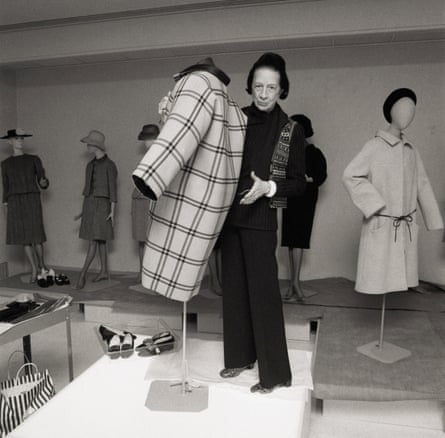Fashion archive: Balenciaga dies | Fashion | The Guardian
Cristobal Balenciaga, the Spanish fashion designer, who died in Spain last week at the age of 77, was recognised as the supreme master of style in dressing women.
Mr Hardy Amies in a recent interview said that it was Balenciaga who killed off English couture: when he introduced ‘his revolutionary soft-cut suits’ he made the English strictly tailored look outdated.
Now we can recognise the timeless elegance in the Balenciaga cut, but when I attended my first Balenciaga collection in Paris after the war something very like apprehension, certainly unease, overcame me. This, surely, was revolution not evolution.
The austerity of the clothes was accentuated by the stance of the model girls, who ignored the audience and removed themselves from the salon in the shortest time possible. The clothes fitted nowhere, yet had a dignity and purity of line that was unmistakable; the effect was more like sculpture than dressmaking. It dawned upon me, as the collection passed, that I was looking at works of art, a totally different conception of elegance.

Diana Vreeland shows off a one seam coat by Balenciaga, New York, 1973.
Photograph: Bettmann/Corbis
Soon we were measuring other couture clothes by Balenciaga’s standards. The trend to an austere looseness, comfortable but waistless, showed in his 1951 ‘shift’ dress, continued next year with ‘free’ coats and jackets, straight, non-fitting, as against the popular tight waistline.
In 1955 his ‘sack’ outline aroused anger as well as interest. Men asked: ‘Why should a woman wish to wear a potato sack instead of showing her shape?’ The ‘sack’ was, in fact, an unbelted tunic over a narrow underskirt.
It was impossible to discuss its merits or demerits with the designer (now always referred to as The Master); he would not at any time see his own best customers, far less allow an interview.
Because his father was drowned when he was a small boy Balenciaga’s mother worked as a seamstress. One of her patrons, a rich, elderly woman, paid for the boy to learn both tailoring and dress-making. From that moment he never looked back.





